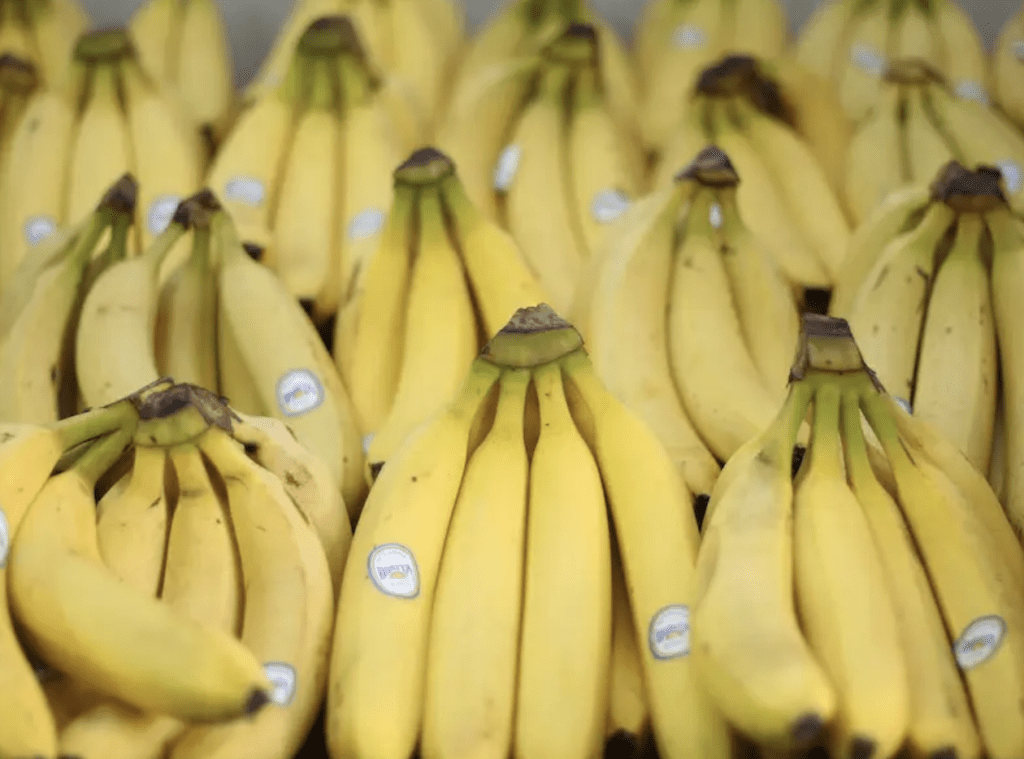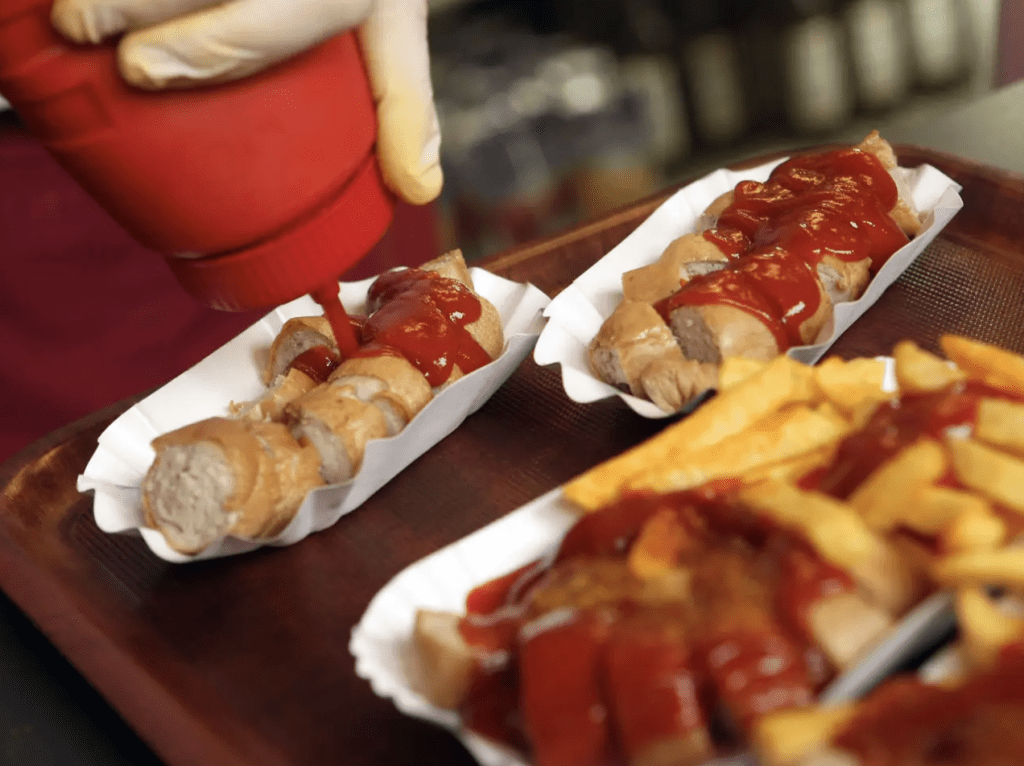Food
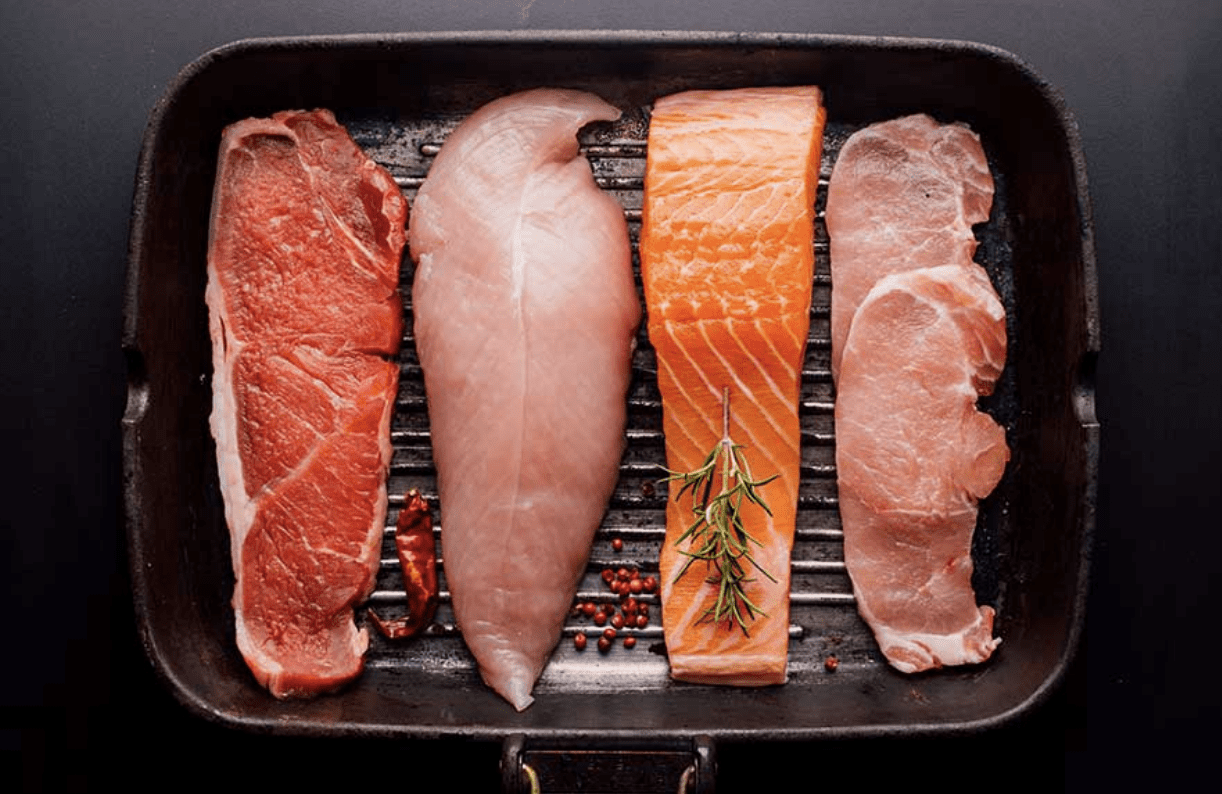
Be careful about reading health books. You may die of a misprint.
Mark Twain
All About Food is an overview of Eater Archetypes, Domestic Expenditure on Food, Market Segments for Outlets, General Restaurant Statistics, Trends in Meals Away From Home, Lunch Purchased at Quick Serve Meal Establishments, Chain Market Size in the US, The Biggest Chains in America, Billions Served by Quick Service Meals, Advertising Spending of Selected Restaurant Chains in the United States
Every day, we hear something new about nutrition. With information coming at us from every direction, it often seems like something is good for you one day but reported as unhealthy the next. It’s easy to get confused about what is nutritious and what is not. One thing that’s important to keep straight is that whole foods are much better for you than processed foods, but that doesn’t mean you have to give up processed foods altogether.
Eat Your Vitamins
Many people worry that they are not getting the daily amount of vitamins their bodies need. This results in people taking multivitamins as a way to reach the recommended daily amount, but the best way for people to get their vitamins is by eating them. Why? A diet of whole grains, vegetables and fruits offers the vitamins and minerals that meet the body’s needs. A person who takes multivitamins can easily exceed the daily recommended amount of vitamins that his or her body needs. That’s why it’s important to consult with a doctor or dietitian about what supplements or multivitamins make sense for you.
Juice is Filled with Sugar
Fruit juice is yummy, but it’s filled with sugar and can be pretty bad for us. Many types of fruit juice contain lots of highly-concentrated added sugar, which is hard for the body to process. One-hundred percent juice is a healthier option, as it doesn’t contain added sugar: just the natural sugar that comes from fruit. Whole fruits are filled with many nutrients and antioxidants, including fiber, which can slow down the body’s absorption of sugar.
You Can Eat Fats
There are many kinds of fat, some which are good and some that are bad. Our bodies depend on fat to protect the organs and retain body heat. Vitamins A, D, E and K are fat-soluble, meaning they depend on fat to be transported throughout the body. People who give up fats to be healthy are actually giving up these essential vitamins, which could result in a vitamin deficiency. Trans and saturated fat intake should be limited, as these fats can raise cholesterol levels. Unsaturated fats do the opposite. They can lower bad cholesterol levels and offer many heart health benefits. Foods rich in unsaturated fats are:
Avocados
Seeds
Fish
Soybeans
Flaxseed
Olive oil
Carbs Aren’t Evil
Information you hear about carbohydrates is confusing. Which are good and which are bad? What matters when it comes to carbohydrates is what kind you are choosing. The best sources of carbs are unprocessed whole grains, fruits and vegetables. White bread, highly processed foods and pastries are unhealthy sources of carbs that can contribute to weight gain.
Protein Isn’t the Best Source of Energy
For an athlete, exercise breaks down proteins in the muscle, making protein an important nutrient to consume regularly. Despite an athlete’s need for protein, using protein as a source of energy can actually compromise the restoration of muscles. It’s often believed that consuming protein in large amounts results in muscle mass, but that is false! Only physical activity can increase muscle mass.
Sodium Isn’t Always Bad
This one is tricky. Sodium helps regulate blood pressure and volume, but too much sodium over time can cause high blood pressure. Foods that are highly processed are often packed with sodium. Changing the diet to lessen salt intake could lead to a reduced risk of heart disease, stroke, kidney damage and high blood pressure. The American Heart Association recommends that we take in less than 1,500 mg of sodium daily; check with your primary care provider or a dietician to determine what number is right for you.
Drink Plenty of Water
Water is essential as it is in every part of us! Water is in every organ, tissue and cell in our body. It helps keep your body temperature normal, protects your spinal cord and lubricates the joints. If that’s not enough to convince you, water also flushes through our vital organs, which helps them stay in tip-top shape. If you don’t have enough water in your body, you can become dehydrated.
Red Meat is OK
Red meat is OK to eat, but in small amounts. Large amounts of red meat have been connected to some chronic conditions. Research has linked red meat to diabetes, cancer and cardiovascular disease. That doesn’t mean you have to give up steak completely, but don’t eat it regularly. Substitute red meat with other protein sources, like fish or nuts.
Eat Small Portion Sizes
It’s hard to avoid oversized portions, especially when eating at restaurants, which usually results in overeating. The amount you eat plays a role in how much energy you have. Figure out the proper portion sizes for you. If you are an overeater, be aware of what triggers you to ignore choosing reasonable portion amounts.
Eat Your Favorite Foods in Moderation
If pizza is your favorite food that is fine. Make sure to eat your pizza in moderation. If you deprive yourself of your favorite foods, you’ll tend to overindulge when you do eat them. Consider making your pizza a healthier option by ordering it with veggies or opting for Canadian bacon, which has less fat than pepperoni.
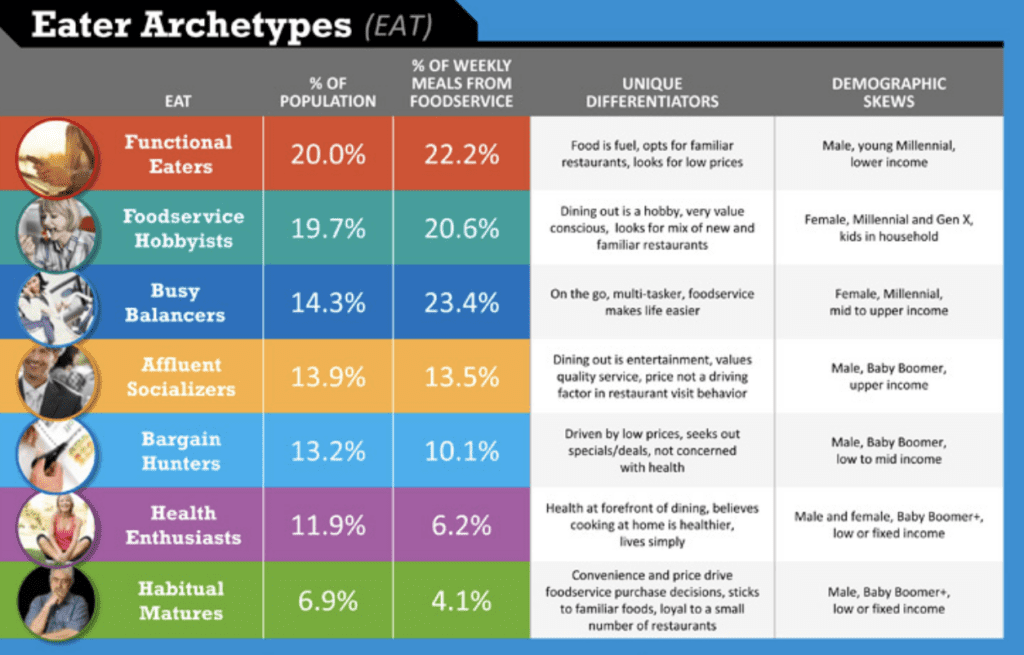
These Segments are Defined as:
Functional Eaters: Comprised heavily of Millennial males, these consumers treat food as fuel and typically look for low prices from familiar restaurants
Foodservice Hobbyists: Dining out at new and familiar restaurants is a hobby for this value-conscious group composed mostly of females with children
Busy Balancers: For this on-the-go, multi-tasking group substantially comprised of middle- and upper-income Millennial females, foodservice makes life easier
Affluent Socializers: Dining out is entertainment for these upper-income Baby Boomer males, who also value quality service over price
Bargain Hunters: Unconcerned with health, these low- and middle-income male Baby Boomers are driven by low prices and regularly seek out specials and deals
Health Enthusiasts: With health driving dining choices, this mixed group of male and female low- or fixed-income Baby Boomers and Matures lives simply and believes that cooking at home is the healthiest option
Habitual Matures: Driven by convenience and price, this group of male Baby Boomers and Matures with low or fixed incomes typically stick to familiar foods and are loyal to just a small number of restaurants
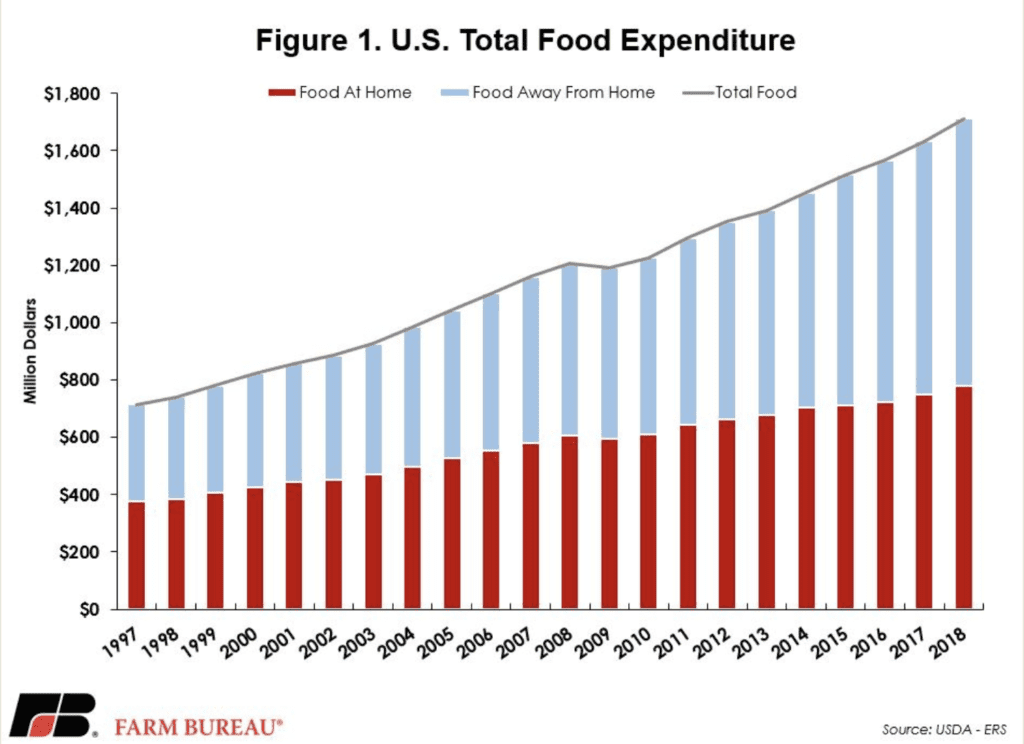
Domestic Expenditure on Food
According to USDA’s Economic Research Service, in 2018 Americans spent an average of 9.7% of their total disposable income on food at home and food away from home. USDA indicates that $1.7 trillion was spent on total food expenditures in the U.S. in 2018, up $78.2 billion from the previous year. The Food Expenditure Series, published annually by USDA, focuses on the magnitude and distribution of food expenditures in the U.S., primarily within the bounds of dollars spent on food at home and food away from home. Food-at-home expenditures are defined as purchases of food at grocery stores and other food stores where the final purchaser is the consumer. Food-away-from-home expenditures include meals and snacks supplied by commercial food service establishments.
Total food expenditures continue to increase each year, with a larger portion of U.S. food expenditures going toward food-away-from-home purchases. According to USDA’s report, the largest differential between food-at-home and food-away-from-home spending in the past 20 years occurred in 2018, with 54% of total food expenditures going to food-away-from-home purchases. Food-away-from-home spending first surpassed food-at-home purchases in 2007, with $581 billion spent. Figure 1 outlines U.S. total food expenditure from 1997 to 2018. A previous Market Intel reviewed this trend in U.S. food expenditures at home and in restaurants
Market Segments
ERS research on foodservice outlets—facilities that serve meals and snacks for immediate consumption on site (food away from home)—examines the size of this growing market and the major market segments such as fast food and full-service outlets.
A Large and Growing Market
The foodservice industry is nearly equal in size to food retailing: the food marketing system, including food service and food retailing, supplied about $1.77 trillion worth of food in 2019. Of this total, $969.4 billion was supplied by foodservice facilities.
Commercial foodservice establishments accounted for the bulk of food-away-from-home expenditures. This category includes full-service restaurants, fast food outlets, caterers, some cafeterias, and other places that prepare, serve, and sell food to the general public for a profit. Some are located within facilities that are not primarily engaged in dispensing meals and snacks, such as lodging places, recreational facilities, and retail stores. Schools and nursing homes are types of non-commercial foodservice establishments. Such establishments are often called “institutional” foodservice facilities.
Full-service and fast-food restaurants—the two largest segments of the commercial foodservice market—account for about 73.1 percent of all food-away-from-home sales in 2019. Full-service establishments have wait staff, and, perhaps, other amenities such as ceramic dishware, nondisposable utensils, and alcohol service. In contrast, fast food restaurants use convenience as a selling point; they have no wait staff, menus tend to be limited, and dining amenities are relatively sparse. According to the National Restaurant Association, restaurants are the Nation’s second-largest private-sector employer, providing jobs for one in 10 Americans.
As part of their growth strategy, fast food companies have built more outlets closer to consumers’ homes and work places to make it more convenient for consumers to purchase meals and snacks. Many restaurant companies opened outlets in nontraditional locations such as department stores. In addition to convenience, a household’s demand for food-away-from-home is affected by its income and demographic characteristics
General Restaurant Statistics
Managing a restaurant is more than just serving food. It also involves knowing how much is the food industry worth, and the food industry’s market size. With a good overview of everything happening in your business, you can plan well and execute right.
One million restaurants are currently in operation in the United States alone.
Over 200 million US consumers went to a sit-down restaurant in 2018.
65% of restaurant guests like to control how much they tip, rather than adopt the tip-free movement.
13% of consumers are brand loyal to their preferred restaurants.
48% of the average American’s food budget goes to restaurants.
60% of restaurants that offer delivery generated incremental sales.
The average American household spends an average of $3,0008 per year dining out.
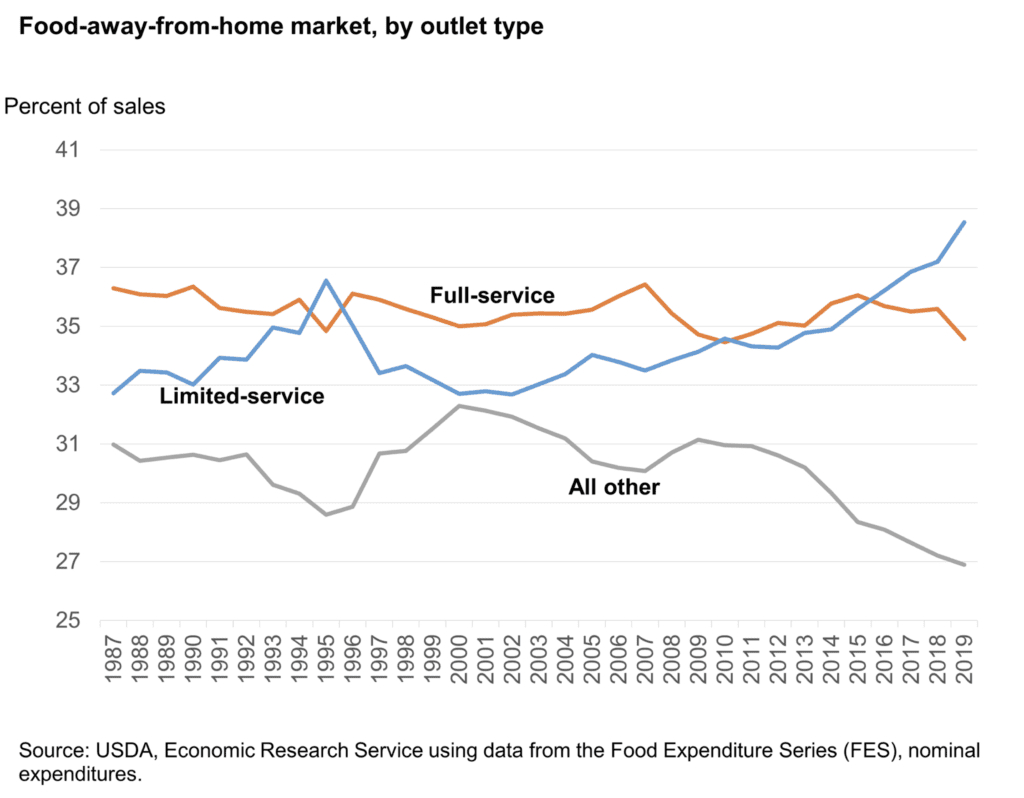
Food Away From Home
The fast food industry revenue in the US alone makes about $110 billion annually.
50 million Americans eat fast food every day.
A complete fast food meal is 37% of your daily calories.
McDonald’s is more recognized than the Christian Cross.
Fast food restaurants are expected to keep growing at 2% annually through 2020.
There are nearly 200,000 fast food franchises in the US as of 2018.
Since fast food’s introduction in 1921, it has become one of America’s preferred ways to dine. One of the reasons service in these establishments is fast is thanks to their POS systems that keep lines short.
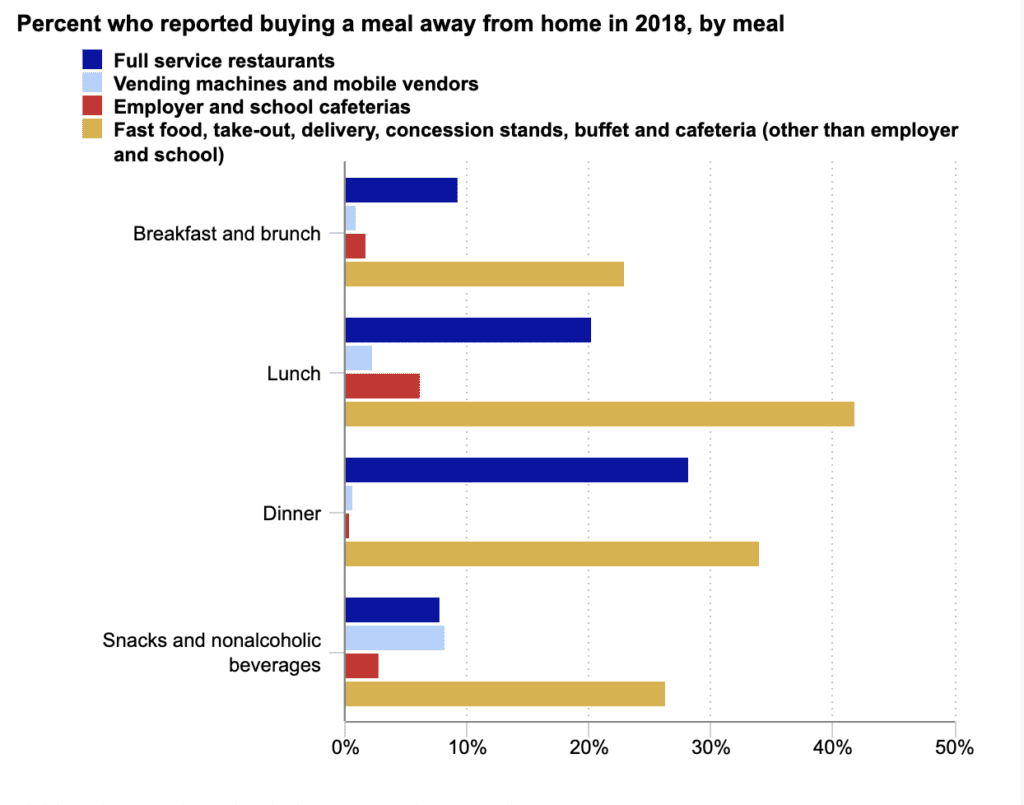
Lunch Purchased at Fast Food Establishments
Breakfast, lunch, dinner or snack, the most popular vendor for these meals is fast food, delivery, or take-out type restaurants. More than one-third of consumer units purchased dinners at these venues each week, and about one-fourth reported breakfast and brunch or snack and nonalcoholic beverage purchases. But the “whopper” is for lunch; three in seven consumer units reported weekly expenditures for lunch at fast food and similar establishments.
Fast Food Restaurants Stats

Fast Food Restaurants in the US – Market Size 2001–2026
The fast food industry keeps growing despite the general public’s newfound surge to go organic and healthy. McDonald’s is the most popular in this field, no surprise there, although one data below puts it in an interesting perspective.
The fast food industry revenue in the US alone makes about $110 billion annually.
50 million Americans eat fast food every day.
A complete fast food meal is 37% of your daily calories.
McDonald’s is more recognized than the Christian Cross.
Fast food restaurants are expected to keep growing at 2% annually through 2020.
There are nearly 200,000 fast food franchises in the US as of 2018.
Since fast food’s introduction in 1921, it has become one of America’s preferred ways to dine. One of the reasons service in these establishments is fast is thanks to their POS systems that keep lines short.
Ranked: The Biggest Fast Food Chains in America
Fast food is a supersized business in America.
The average American spends as much as $1,200 every year on fast food — and roughly a quarter of the U.S. population eats three or more fast food meals per week.
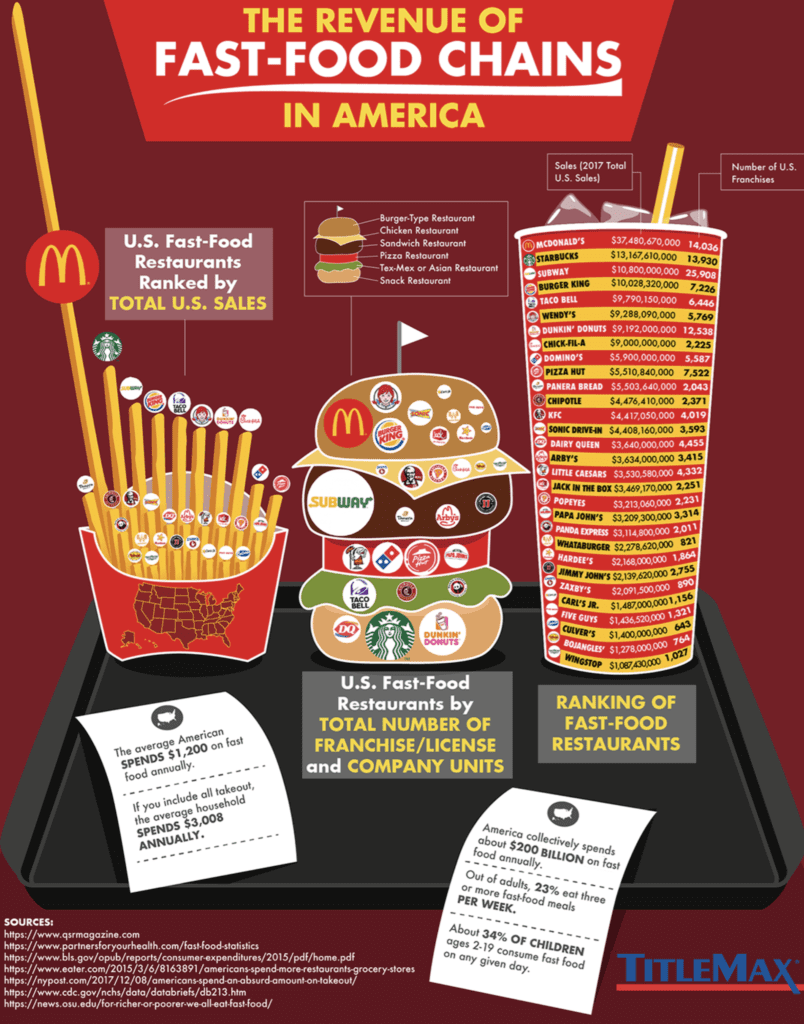
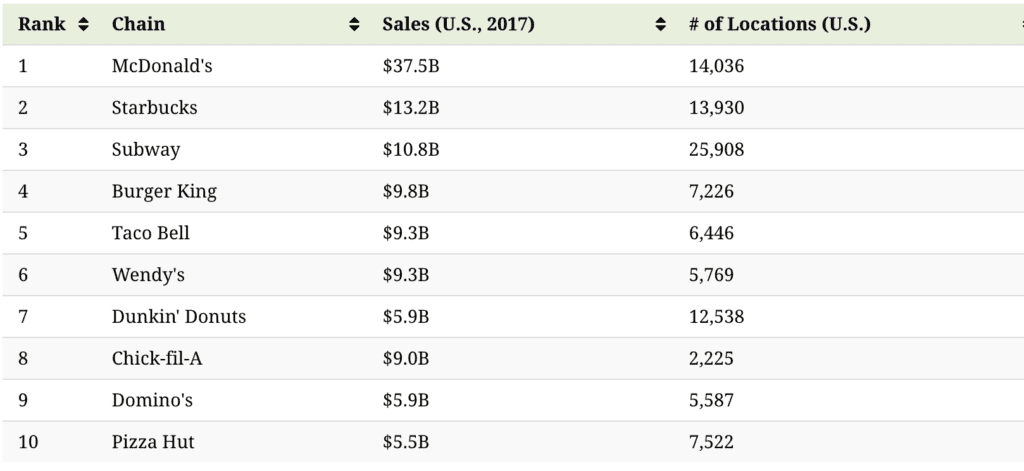
Billions Served By Fast Food Chains
All of the biggest fast food chains now top $1 billion in sales annually. McDonald’s leads the pack with almost triple the sales of the number two chain, Starbucks.
In 2017, the top 30 fast food chains rang up $172 billion in sales at over 140,000 locations across the United States. When smaller chains are also included, annual industry revenue tops a whopping $200 billion.:
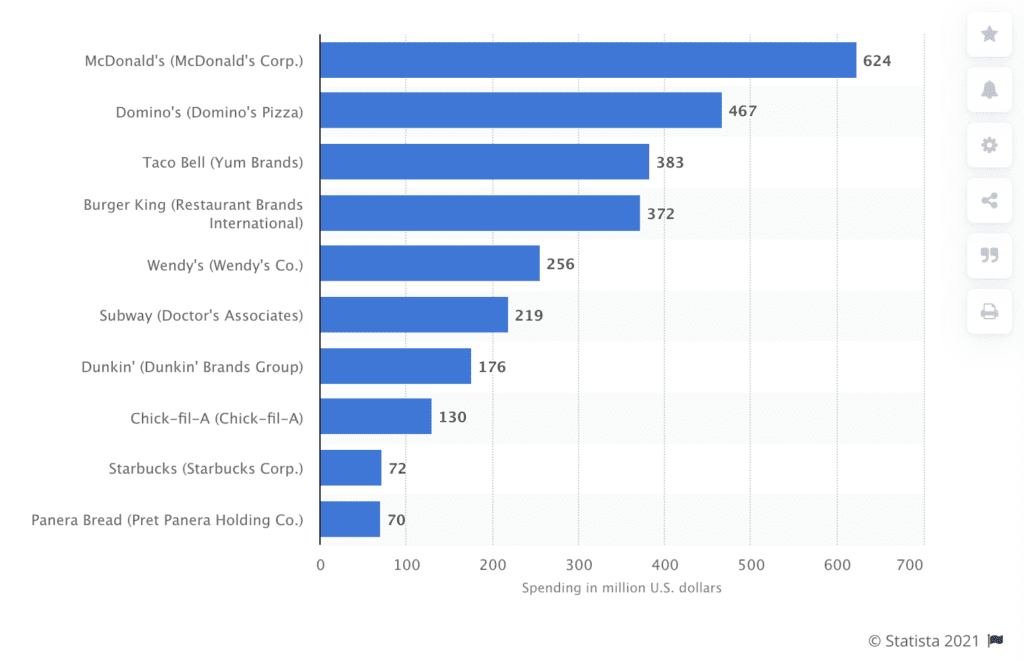
Advertising Spending of Selected Restaurant Chains in the United States in 2019
In 2019, McDonald’s spent more on advertising in the United States than all other widely recognized restaurant chains. With 624 million U.S. dollars in ad expenditures, the chain was way ahead of brands such as Domino’s (next in line, with a 467 million ad spend) and Taco Bell (383 million). Burger King also spent more than 300 million on measured media that year, and Wendy’s invested a little over 250 million dollars, thus closing the list of top five spending restaurant chains.
User Reviews for Restaurants
User reviews are more than ever critical to your business today. Make sure you have a strategy to manage your online customers.
92% of diners read restaurant reviews before visiting [10]
77% of restaurant-goers trust peer reviews rather than critic reviews [10]
33% of consumers refuse to go to restaurants that have fewer than four stars on their reviews. [10]
35% of diners say that online reviews help influence their decision when choosing a place to dine.
Say it Ain’t So

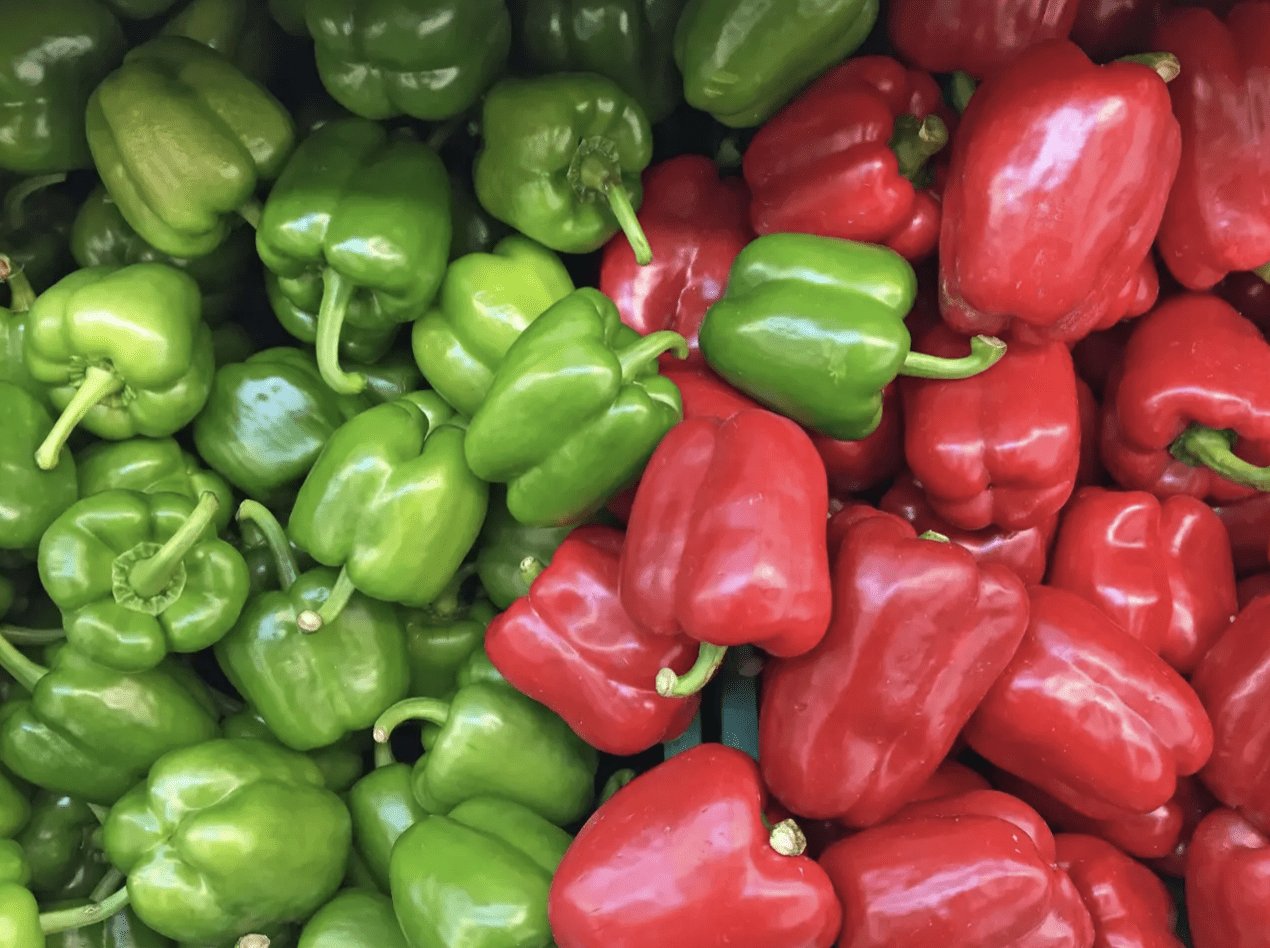




Potatoes Can Absorb And Reflect Wi-Fi Signals – When Boeing wanted to test out its wireless signal on new planes in 2012, they placed giant piles of potatoes on seats. Because of their high water content and chemical makeup, potatoes absorb and reflect radio and wireless signals just like humans do.
Green, Yellow & Red Bell Peppers Are Not Actually The Same Vegetable – These vegetables are not always the same plant. Though some green peppers are unripe red peppers, green, yellow, orange, and red peppers are all unique plants with their own seeds.
Most Wasabi is Actually Just Dyed Horseradish – If you have a habit of smearing spicy wasabi all over your California roll, just know that you are — in all likelihood — just eating dyed horseradish. About 99% of all wasabi sold in the United States is fake, and you’d have to go to a very high-end sushi restaurant in Japan to find the real stuff. Wasabi costs $80 a pound, so it’s much more.
Domestic Chickens Produce More Eggs – Before being domesticated, chickens only produced about a dozen eggs a year. Now they can produce hundreds. The most prolific egg-laying chicken was in Missouri in 1979. The chicken laid 371 eggs in one year, according to Guinness World Records.
Carrots Were Originally Purple – According to the National Carrot Museum in the UK, the first carrots looked nothing like they do today. Originally these vegetables were purple or white with a thin root. The orange carrots we know and eat today are actually the result of a genetic mutation in the late 16th century that won out over the original color.
Honey Will Never Ever Go Bad – Honey in its natural state is very low in moisture and very acidic: two primary defenses against food spoilage. In a low-moisture and high-acid environment like a sealed jar, bacteria will die almost immediately, according to the Honey and Pollination Center at the Robert Mondavi Institute at University of California. It is a myth, however, that honey is the only food that will last forever: salt, sugar, and raw rice also have eternal shelf lives.

Every Banana You Eat is a Clone 
Ripe Cranberries Bounce Like Rubber Balls. 
Ketchup – A Diarrhea Treatment 
Peanut Butter to Diamonds 
How Many Rows in An Ear of Corn? 
Shredded Cheese
Bananas – Even though there are 1,000 varieties of bananas all over the world, the common yellow fruits you see in the supermarket are all genetic clones of the Cavendish variety.
Cranberries are commonly referred to as “bounce berries” because they bounce when they’re ripe. In fact, bouncing cranberries is a common ripeness test for farmers and consumers alike.
Ketchup – In the early 1800s, tomatoes were believed to have medicinal qualities. Per Fast Company, a doctor in Ohio in the 1830s claimed that tomatoes could treat diarrhea and indigestion, publishing recipes for a kind of tomato ketchup that he soon turned into a concentrated pill.
Peanut Butter – Scientists can turn peanut butter into diamonds. Scientists at the Bayerisches Geoinstitut in Germany have discovered that since peanut butter is so rich in carbon, it’s possible to turn simple Skippy into diamonds. All you need is to extract the oxygen from the carbon dioxide found in the peanut spread, and then enact immense pressure on the carbon left behind.
Corn – A typical ear of corn has an even number of rows. Ears of corn generally have an even number of rows, usually 16.
Shredded Cheese – Many shredded cheeses and cereals contain cellulose (wood pulp). Per Eater, cellulose, which is essentially sawdust, is often used in various shredded cheese products and cereals to prevent them from clumping.

